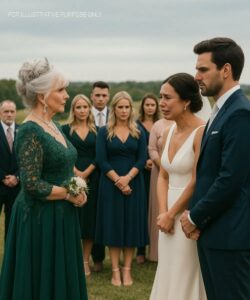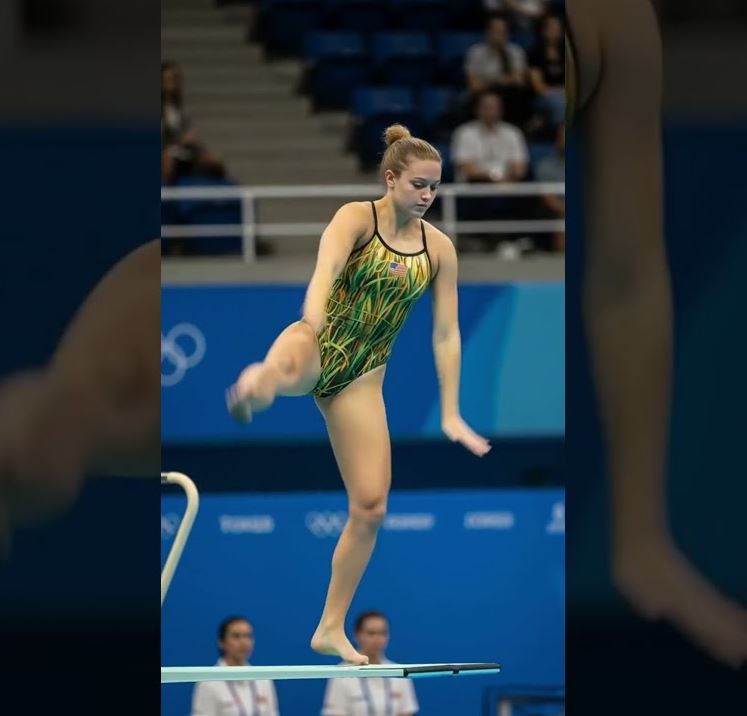Charlotte only wanted to support her son on his big day, but her choice of dress sparked unexpected tension with the bride. Was she truly in the wrong—or was it all just a misunderstanding?
I never intended to cause any drama. All I wanted was to be a proud mother, standing beside my son on one of the most important days of his life. I pictured myself beaming with pride as he walked down the aisle. But instead, my outfit became the center of an unexpected conflict.
Let me start from the beginning.
When my son, Mitterson, first introduced us to his girlfriend, Anne, I was surprised. Not upset—just caught off guard.
Mitterson has always been a thoughtful, focused young man. Even back in high school, he was already talking about becoming a lawyer. “I want to stand up for kids who don’t have a voice,” he once said at breakfast while finishing a school assignment.
I always believed in him. He worked hard, got into Stanford, graduated with honors, and secured a job at a respected law firm soon after.
Anne was different. A creative, free-spirited soul, she worked odd hours as a freelance coder from a small apartment. Her lifestyle seemed the opposite of my son’s structured, carefully planned routine. Still, despite their differences, they made it work—and that’s what truly mattered.
When Mitterson proposed, he made sure we were part of the moment. It felt like a new chapter was beginning—one I was eager to be part of.
“Mom, please come. Anne doesn’t have a close family. Your presence will mean a lot to her,” he told me over the phone.
I said yes without hesitation.
After the engagement, my husband, James, and I offered to pay for the wedding. We had saved for Mitterson’s education, but thanks to scholarships and grants, most of that money was untouched.
“This is how we help them start their life together,” James said. I agreed.
I had quietly hoped that planning the wedding would be a chance for Anne and me to grow closer. Having never had a daughter, I imagined this might be the beginning of a meaningful connection. But it quickly became clear that our visions for the wedding were very different.
The First Conflict
About two months into the planning process, Anne and I met at a café to go over some of the details. The meeting didn’t go as I had hoped.
“I think roses are timeless,” I suggested as I cut into a slice of red velvet cake.
“They are,” she replied with a polite smile, “but they’re also kind of overdone. Mitterson and I really want peonies.”
We disagreed on music, color palettes, table arrangements—you name it. Our meeting turned into a polite tug-of-war. It was frustrating.
Finally, I decided to step back.
“How about you handle all the big details,” I said, “and just tell me what color the bridesmaids are wearing so I can choose something that won’t clash.”
“Champagne,” she replied. “But more muted—dusty tones.”
“Perfect,” I said, thinking that would settle it.
It didn’t.
The Dress
I spent weeks searching for the perfect dress. I had no intention of outshining the bride, but I also didn’t want to disappear into the background.
Eventually, I found a beautiful gown—elegant and tasteful. It was floor-length with delicate beading and a soft champagne hue that complemented the bridesmaids’ dresses without copying them. I loved it. It made me feel confident and proud.
The wedding day arrived, and everything seemed to be going beautifully—until it wasn’t.
When Anne saw me, her expression changed.
“You’re wearing champagne?” she said sharply in the bridal suite. “That’s the bridesmaids’ color.”
“But that’s what you told me,” I said, confused. “I chose something different in style so it wouldn’t be too similar.”
“It’s not just the color,” she replied. “It’s the beading too—it looks like my dress. You’ve completely upstaged me!”
I was stunned.
“I asked you for one thing,” she said. “You’ve ruined my wedding.”
The room went silent. Even James looked shocked.
The Fallout
Later, I found Mitterson outside, pacing.
“Mom, what happened in there?” he asked.
“She’s upset about my dress,” I said quietly.
He sighed. “Anne’s just overwhelmed. Everything’s been a lot. Could you just try to keep things calm today? For me?”
I nodded, though I felt deeply hurt. I had tried to be respectful, to be involved—but somehow, my efforts had backfired.
For the rest of the evening, I kept my distance. I smiled for the photos, toasted the couple, and applauded the first dance.
But inside, I felt invisible.
After the Wedding
A week later, Anne still wouldn’t speak to me. She told Mitterson she believed I had deliberately tried to “steal her spotlight”—and that she couldn’t forgive it.
I was shocked.
“She really thinks you did it on purpose,” James said as we sat on the porch.
“But she gave me the color,” I said, still upset. “What else could I have done?”
James gave a small smile. “One day, maybe she’ll understand.”
Who Was Really at Fault?
I never set out to cause a problem. All I wanted was to be a supportive mother on my son’s special day. Maybe I should’ve sent Anne a photo of the dress beforehand. Maybe I could’ve chosen something simpler. But to be accused of ruining the entire wedding?
That doesn’t feel fair.
Was the dress truly the issue—or was it something deeper? Miscommunication, stress, expectations? I don’t know.
What I do know is that I still hope, one day, Anne and I can have a real conversation—not as adversaries, but as two people who care about the same man.
Until then, I’ll give her space—and keep that champagne gown in the back of my closet.




